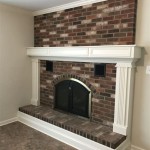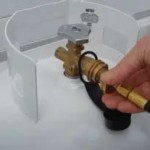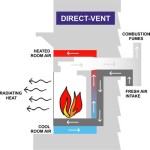```html
2-Sided Corner Gas Fireplace: A Comprehensive Overview
A 2-sided corner gas fireplace offers a visually striking and functional heating solution for residential and commercial spaces. Unlike traditional fireplaces that are confined to a single wall, a corner unit allows flames to be viewed from two adjacent perspectives, creating a captivating focal point and enhancing the ambiance of multiple rooms simultaneously. This design choice provides both aesthetic appeal and practical advantages, making it a popular option for modern interior design.
The inherent flexibility of a 2-sided corner gas fireplace allows for seamless integration into various architectural layouts. They can be installed in a pre-existing corner or incorporated during the construction phase of a new building. This adaptability makes them suitable for open-concept living areas, dividing walls between rooms, and even outdoor spaces where a shared fireplace is desired. The strategic placement of such a fireplace can significantly impact the flow and feel of a room, adding warmth and visual interest.
The benefits extend beyond mere aesthetics. Gas fireplaces, in general, offer superior convenience and efficiency compared to traditional wood-burning fireplaces. They eliminate the need for wood storage, reduce the risk of creosote buildup, and provide instant heat at the touch of a button. A 2-sided corner unit amplifies these advantages by distributing heat more evenly across two rooms, minimizing cold spots and contributing to a more comfortable indoor environment.
Key Point 1: Design and Installation Considerations
The design and installation of a 2-sided corner gas fireplace require careful planning and adherence to safety regulations. The first step involves selecting a unit that complements the overall aesthetic of the space and meets the heating requirements. Factors to consider include the fireplace’s BTU output (British Thermal Units), the dimensions of the firebox, the style of the surround (e.g., brick, stone, tile, or metal), and the type of burner technology used.
Venting is a critical aspect of gas fireplace installation. Depending on the model, a direct vent or vent-free system may be employed. Direct vent fireplaces draw combustion air from outside and exhaust fumes directly outside through a sealed system, ensuring optimal air quality and safety. Vent-free fireplaces, on the other hand, do not require venting but must be certified to meet strict emission standards. Local building codes and regulations should be consulted to determine the appropriate venting method for the specific installation.
Professional installation is highly recommended for gas fireplaces. A qualified technician will ensure that the gas line is properly connected, the venting system is correctly installed, and all safety features are functioning as intended. This will minimize the risk of gas leaks, carbon monoxide poisoning, and other potential hazards. Furthermore, professional installation often comes with a warranty, providing added peace of mind for the homeowner.
The framing and finishing around the fireplace are also important design considerations. The framing should be constructed of fire-resistant materials to prevent the spread of fire. The finishing materials, such as stone, brick, or tile, should be chosen to complement the surrounding décor and provide a visually appealing surround for the fireplace. The design should also incorporate adequate clearances around the fireplace to prevent combustible materials from overheating.
Key Point 2: Efficiency and Heating Performance
Gas fireplaces are known for their efficiency, and 2-sided corner units are no exception. The efficiency of a gas fireplace is measured by its AFUE (Annual Fuel Utilization Efficiency) rating, which indicates the percentage of fuel that is converted into usable heat. Higher AFUE ratings indicate more efficient fireplaces. Modern gas fireplaces can achieve AFUE ratings of 70% or higher, making them a viable alternative to traditional wood-burning fireplaces.
The heating performance of a 2-sided corner gas fireplace is influenced by several factors, including the BTU output, the size of the rooms being heated, and the insulation of the building. A fireplace with a higher BTU output will be capable of heating a larger area. However, it is important to choose a fireplace that is appropriately sized for the space to avoid overheating or inefficient operation. Proper insulation will help to retain heat within the rooms and reduce energy consumption.
Zone heating is another significant advantage of gas fireplaces. By focusing the heat in specific areas of the home, homeowners can reduce the overall energy consumption and lower their heating bills. A 2-sided corner gas fireplace is particularly well-suited for zone heating, as it can provide warmth to two adjacent rooms simultaneously. This makes it possible to keep the central heating system at a lower setting and rely on the fireplace for supplemental heat in the areas where it is needed most.
Many gas fireplaces are equipped with features that further enhance their efficiency and heating performance. These features may include programmable thermostats, remote controls, and variable flame height settings. Programmable thermostats allow homeowners to set specific heating schedules, ensuring that the fireplace only operates when it is needed. Remote controls provide convenient control over the fireplace from anywhere in the room. Variable flame height settings allow homeowners to adjust the amount of heat produced by the fireplace to suit their comfort level.
Key Point 3: Safety and Maintenance Considerations
Safety is paramount when it comes to gas fireplaces. Regular maintenance is essential to ensure that the fireplace is operating safely and efficiently. This includes inspecting the gas line for leaks, cleaning the burner and pilot light, and checking the venting system for obstructions. A qualified technician should perform a thorough inspection of the fireplace at least once a year to identify and address any potential problems.
Carbon monoxide detectors are a critical safety feature for any home with a gas fireplace. Carbon monoxide is a colorless, odorless gas that can be deadly if inhaled. Carbon monoxide detectors should be installed near the fireplace and in other areas of the home to provide early warning of a leak. It is important to test the detectors regularly and replace the batteries as needed.
Proper ventilation is essential to prevent the buildup of carbon monoxide and other harmful gases. Direct vent fireplaces provide the safest ventilation option, as they draw combustion air from outside and exhaust fumes directly outside through a sealed system. Vent-free fireplaces require careful monitoring to ensure that the oxygen levels in the room remain adequate. It is important to avoid blocking the air intakes or exhausts of any gas fireplace.
Child safety is another important consideration for homeowners with young children. The glass front of a gas fireplace can become very hot during operation, posing a burn risk to children. Fireplace screens or guards can be installed to prevent children from touching the glass. It is also important to educate children about the dangers of fire and to supervise them closely when the fireplace is in use.
In addition to routine maintenance, it is important to follow the manufacturer's instructions for the safe operation of the gas fireplace. This includes using the correct type of fuel, avoiding the use of flammable materials near the fireplace, and properly extinguishing the pilot light when the fireplace is not in use. By following these safety guidelines, homeowners can enjoy the warmth and beauty of a 2-sided corner gas fireplace without compromising their safety.
```
Chicago Corner 40re Designer Gas Fireplace Regency
Corner Two Sided Gas Fireplace Heat Glo
Corner Two Sided Gas Fireplace Heat Glo

Corner Two Sided Gas Fireplace Capo Fireside

Regency Gas Fireplace Two Sided Chicago Corner City Series 40 The Club

Valor Lx2 Corner 2200rkn Natural Gas R E Macdonald

Vantage Hearth Direct Vent Gas Corner Fireplace

Hearth Home Technologies Corner Gas Fireplace Fireside

Double Corner Fireplace Modern

Chicago Corner 40 2 Sided Fireplace The Heater Man
Related Posts








